Mattress Choices
August 2025Are IKEA mattresses any good? Ultimate IKEA bed Review
| John Ryan by Design | IKEA | |
|---|---|---|
| Customer Satisfaction | ★★★★★ 4.9/5 on Trustpilot Over 3,000+ reviews | ★☆☆☆☆ 1.4/5 on Trustpilot |
| Return Policy | Love it or return it Money back Guarantee | Exchange only Store credit |
| Materials and construction | Natural Fillings Hand made in UK | Synthetic materials Factory production |
| Customer service | Free consultation from bed experts | Self guided buying experience |
| Delivery | White glove 2 man installation with old bed recycling | DIY installation |
We thought it would be helpful to share our review of the latest IKEA mattresses, leveraging our expertise in the mattress industry to highlight key considerations. We’ve visited several IKEA stores, armed with their mattress technical specifications sheets, to test their models using the standard 2-minute test drive that most bed shoppers undergo before selecting a mattress.
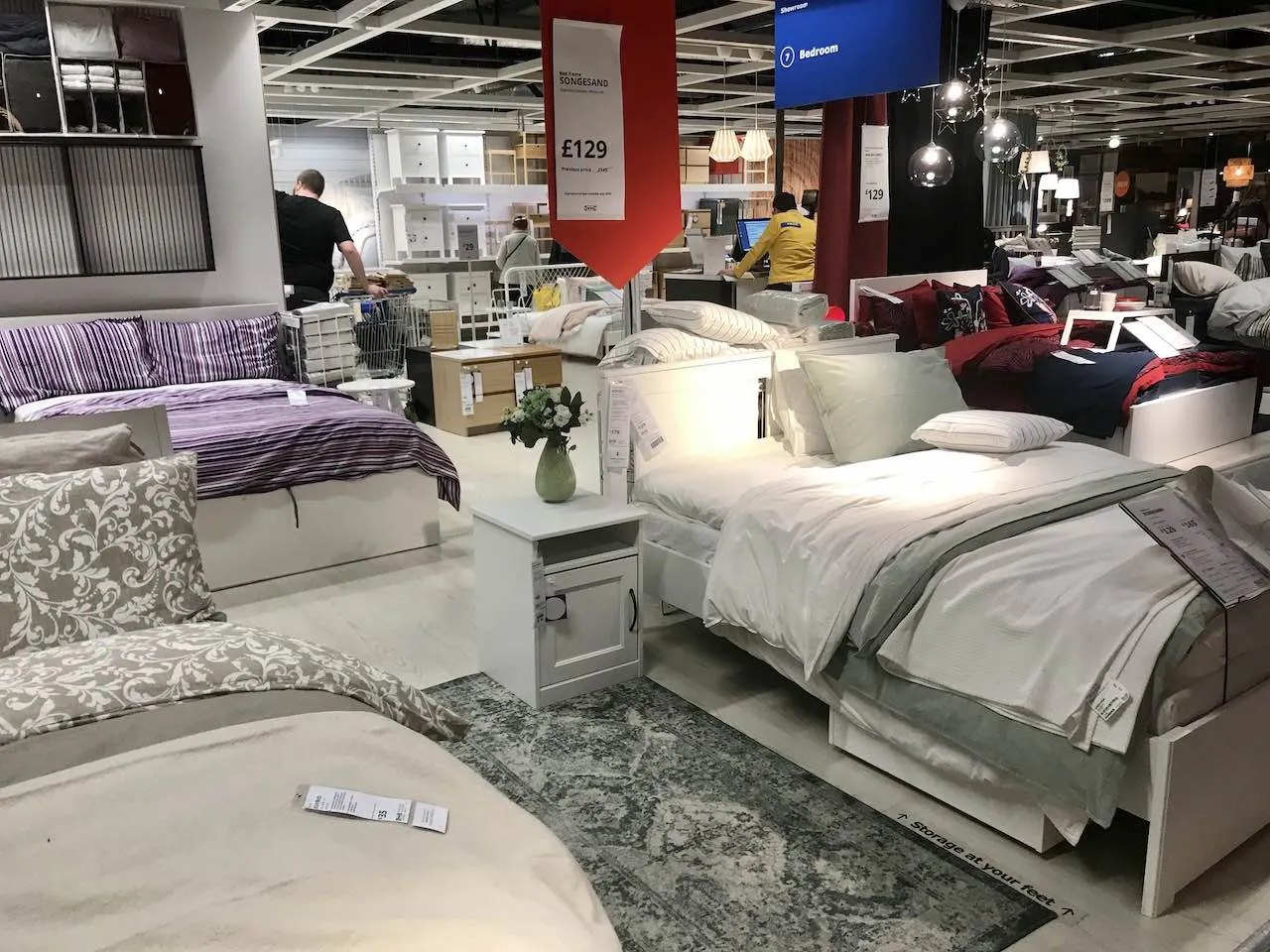
We’ve always advocated that a 2-minute test drive is not an accurate way to find a mattress, and there are easier means to choose the correct one. Given that this is the average time spent ‘testing a mattress in a showroom’, it felt apt to follow suit.
We then reviewed it against the specification sheets to provide you with a review of the construction method of IKEA beds.
Are IKEA beds any good?
The quick answer is yes, for an entry-level mattress price point using synthetic upholstery and pocket springs IKEA beds are fine. For the price point up to £650 they are good value.
If you’re on a budget then the IKEA range of beds is a solid group of mattresses with some nice beginner bed features that other retailers could take a lesson or two from. However, if you’re looking for a bespoke mattress, a bed that’s breathable, tailored to your bodyweight or something to help you sleep when you have a bad back/health issue you should probably look elsewhere.
| How much to spend on a double mattress? | What can I expect for my money? |
|---|---|
| Under £500 | Will not get you much at best a 13.5 gauge open coil/cage sprung with a thin polyester layer or a solid foam mattress. |
| £500 | Entry level spunbond springs with some form of synthetic upholstery. Usually one sided mattresses. |
| £750 | The beginnings of a basic pocket springs unit with 800 – 1000 count. No substantial amount of filling other than foams and synthetic materials. Two sided models. |
| £1000 | Should get you away from most low ranges and into the mid-range pocket spring models. |
| £1250 | Should get you a decent pocket sprung mattress with some Natural Fibre content. |
| £1500 | Should get you many manufacturers mid-range models with Natural Fibres |
| £1500-£2000 | Should get you a Hand Made primarily Natural Fibre Quality Mattress |
| £2000+ | You should expect 100% Natural Fibres and Traditional Hand Made Construction Method. |
| £5000+ | A Bespoke Hand Made Sleep System, High-end Spring Units & Featuring the Worlds Most Luxurious Natural Fibres. |
IKEA mattresses are most suitable for:
- Mattresses on a budget
- A mattress if you have no health complaints
- People who find it easy to sleep on anything
- Mattresses for your first home
- Beds for buy to let
- Student accommodation
- Beds under £650 (for a kingsize)
IKEA Mattress Reviews
If you’re looking at buying an IKEA mattress but are confused over which model may be suitable, then we have provided reviews of each mattress to assess them against your sleep criteria. Read on for a detailed guide to IKEA mattress reviews.
- Benefits of IKEA Mattresses
- Drawbacks of IKEAS Mattresses
- VATNESTRÖM Mattress Review
- VESTERÖY Mattress Review
- VALEVÅG Mattress Review
- VÅGSTRANDA Mattress Review
- ÅBYGDA Mattress Review
- HIDRASUND Mattress Review
- HOKKASEN Mattress Review
- MORGEDAL Mattress Review
- HOVAG Mattress Review
- HAMARVIK Mattress Review
- HUSVIKA Mattress Review
- HYLLESTAD Mattress Review
- MALFORS 2-sided Mattress Review
- What type of springs do IKEA mattresses use?
- How are IKEA beds delivered?
- What is the best IKEA mattress?
- Does rolling IKEA mattresses damage them?
- Who makes IKEA’s beds & mattresses?
- IKEA mattress returns and guarantees explained
1. Benefits of IKEA Mattresses
- IKEA’s price point is really competitive, in part due to its huge scale and buying power. It means they are offering models that are entry-level and midpoint. They don’t offer any high-end luxury mattress specifications at all.
- A number of their models can be rolled up due to the limited upholstery, which means they can be cheaply shipped.
- IKEA offers a one-stop-shop, meaning you can literally furnish your entire house in one visit (if you so wish!).
- They give you some idea of what’s inside the mattresses, unlike other retailers!
2. Drawbacks of IKEA Mattresses
- They only offer a medium to firm feels in IKEAs comfort layers.
- The construction method is basic – see the mattress bulging discussed further on.
- The durability of the mattresses is low, giving them a short shelf life.
- They only use synthetic pocket springs with the lowest spring counts in their beds.
- There is zero tailoring for different bodyweights or comfort preferences in IKEA mattresses.
- It’s one size fits all with IKEA beds
3. VATNESTRÖM Pocket Sprung Mattress Review
IKEAs top end pocket sprung mattress offering is the VATNESTRÖM model, which contains a mix of different predominantly* natural fibres. The first IKEA mattress to move away from synthetic foams, memory foams or man-made materials, which is really exciting to see finally! It’s a hybrid mattress of synthetic pocket springs and latex as the primary comfort layer.
The VATNESTRÖM mattress contains:
- Graphite latex comfort layer (No density or blend given)
- Wool wrap around the sides of the spring unit (No GSM)
- Wool and coir spring insulator (NO GSM)
- 650 synthetic pocket springs (in a king size)
- 26cm depth

It’s a well-upholstered one-sided mattress that comes in two spring tensions: medium firm or a firm spring tension. The firmer of the two is really firm in terms of support, but this is offset by the use of a graphite latex (*which may be synthetic latex; the product description doesn’t further detail – if so, it means this is a synthetic layer and not natural). The other upholstery is a wool layer and then a coir and wool spring insulator layer.
Sadly IKEA don’t disclose the grams per square meter of these mattress fibres (read more on why the GSM is essential in this article).
This is a one-sided mattress, which, given the price point of £799 for a kingsize, it is a bit disappointing. As it only has one side to use and all the wear and tear will be limited to one side rather than a traditional two-sided model.
Given the fact that graphite latex is the top comfort layer (which has an incredible rebound rate and longevity compared to memory foam), we would have expected them to include another layer on the other ‘bottom side’ of this mattress to make it fully turnable. This would double its lifespan without increasing the price point significantly.
The feel of this mattress was comfortable and more on the firmer side of medium, like the description details. What we did find was that the edge support was pretty minimal; this is where a firmer spring is used to stop roll-off. However, when combined with the latex, it seemed to roll quite quickly the closer to the edge we got.

The mattress finishing details were disappointing. IKEA are still only using machine side stitching, rather than a quality hand side stitch. They do use a mix of cotton and rayon in their cover. The rayon provides the fire retardancy required, which is why it’s a blend of 53% linen and 47%viscose/rayon blend.
This mattress comes vacuum-packed and has a 10 year guarantee.
VATNESTRÖM Comfort Zones Explained
The product listing on the VATNESTRÖM IKEA mattress states that it contains “5 comfort zones right where you need them support hips and shoulders, creating a natural spine alignment”. This can cause some confusion amongst consumers as to whether this is the spring unit forming these comfort layers or the latex topper. In 99% of mattresses using comfort zones, these zones are created by the latex or foam layer and not the spring tension.

This is done by perforating the top layer of latex at different intervals to soften up areas where hips, shoulders or ankles may be. The tricky thing with comfort zones is to get them right. You really need to have a bed made to measure. Imagine you are a 5 ft 3 sleeper with a 6ft 6 sleeper; the comfort zones won’t align with both people.
These comfort zones are created to help give latex a bit more responsivity, especially if firmer graphite latex foam is used. Whilst it’s an important factor to consider when buying a new mattress, comfort zones should be taken with a pinch of salt.
It’s more important to know the:
- Depth of latex
- Density of latex
- Blend of natural to synthetic
- Type of latex (Dunlop or Talalay)
Is the VATNESTRÖM worth it?
This IKEA mattress does show some fantastic upgraded materials compared to previous models such as the previous HIDRASUND model. However, it’s still one-sided, meaning for the money, it should only be compared to a mattress that costs at least £1500 (just under twice the price) given you’d need to double the latex, wool and coir to make it two-sided. If you’re looking at this mattress, then please compare it to our Artisan 1500 mattress, which has a similar feel but is two-sided and handmade.
4. VESTERÖY Mattress Review
The VESTERÖY is the IKEA entry-level pocket spring model, which is targeted at the very lower end of the mattress market with a price point of £279. This is where IKEA’s buying power can really help bring consumers like you a bargain. This must be caveated by saying that it’s a very basic construction mattress, so although pocket spring, memory foam mattresses of the same price point may be a better option to get ‘more longevity and quality’ for your money at the £300 price point.

The VESTERÖY mattress contains:
- Synthetic foam comfort layer (33kg – firm looks like 3cm in depth)
- Synthetic pocket spring unit (800 springs in a king size) – no gauge or tension given
- 100% polyester cover
- 20cm depth
The main niggle with this mattress model is the lack of fibres and fillings. It is a spring unit and one single layer of 3cm foam. It’s also one-sided, meaning you can’t turn it, and any settlement can’t be evened out. We understand why IKEA has an entry-level model like this, but we do think you’d be better with a 2 sided foam mattress in terms of longevity.
The fitness of this mattress is either medium or firm. We assume that this is created by the spring tension and not the comfort layer, given it’s the same foam 33kg in each model. I.e. the medium model will be a 1.4 gauge spring and the firm a 1.6 gauge pocket spring.
Therefore if you’re under 13 stone it may be too firm as the spring unit is likely to be a 1.6 gauge for the firm model, aimed at sleepers over 15 stone.
You may find that adding a deep topper to the VESTERÖY mattress helps it last a bit longer and gives an extra upholstery layer to this simple mattress construction style. As an alternative, have a look at our Origins Comfort 1000 mattress for the bare minimum you want to expect from a well-made and long-lasting pocket spring mattress.
The feel of this mattress was quite awkward and uncomfortable. The tester was 11 stone and slight, he could feel the springs through the mattress when on his side. But given the price point, this is not surprising and the fact there’s only 3cm of upholstery in the entire mattress.
Other concerns with the VESTERÖY mattress detailing:
- There’s no mention of edge support, meaning the same tension of pocket spring is used to the edge. This means more chance of roll-off
- The side stitching is machine stitched and not likely to be hand tied to the pocket springs, just the wire perimeter bar
- The piping and stitching in the showroom model were wobbly and poorly finished. See below.
- Only 20cm in depth leaving little to no room for upholstery or comfort layers without additional toppers

5. VALEVÅG Mattress Review
The VALEVÅG is IKEA’s mid-point pocket sprung mattress. One step up from the VESTERÖY with additional upholstery layers as the differentiator between the two. The price jumps to £449 for a king size, which reflects the additional upholstery and details. This price point still sits in the entry-level mattress category. Lastly, this is a one-sided mattress, so price needs to be taken into account.
The VALEVÅG mattress contains:
- Polyester quilted cover
- 33kg man-made foam comfort layer (looks like 5cm-7cm but undisclosed)
- 750 Synthetic encased steel pocket springs, either medium or firm tension (in a Kingsize)
- One-sided and comes rolled
Compared to its sister, the VESTERÖY, this bed is a much more comfortable and soft feel mattress. Due to the inclusion of the quilted polyester cover and deeper foam at the main comfort layer. Again, this uses ‘comfort layers’, so it’s assumed that the foam is either castellated or perforated to achieve this. Sadly, the description doesn’t confirm this.

However, even in the firm tension, this under our 2-minute test felt very soft. So if you prefer a firmer sleep this is not the mattress to you. We can only assume the softness is created by the foam and quilted polyester cover. We would argue that the foam feels more like a 40kgh than 33kg foam which is why it’s so soft, but can’t confirm.
Side sleepers and hot sleepers may find this mattress troublesome. For side sleepers, the one layer of upholstery, even if 7cm at its deepest estimate, will settle over time and won’t offer enough upholstery to support hips, shoulders or necks once it’s compressed. For warmer sleepers, the man-made foam will retain far more heat than natural fibres, so it’s worth bearing that in mind of adding a deep natural fibre topper such as 100% natural wool or goose down (both of which will probably cost half the cost of this mattress at around £200 for a well made one).
6. VÅGSTRANDA Mattress Review
Next up is the true entry-level mattress the VÅGSTRANDA at £539 for a king size mattress compared to other retailers models such as Dreams, Bensons and Furniture village. Imagine if you took the VALEVÅG above, add a layer of micro springs then you get the VÅGSTRANDA. It feels more responsive than the VÅGSTRANDA but will be an acquired taste as some people love dual layers of springs whereas others find them quite nauseous as they move differently, causing a very lively sleeping surface.
The VÅGSTRANDA contains:
- Polyester quilted cover
- 33kg man-made foam comfort layer (Between 5 and 7cm of foam)
- Unknown amount of micro springs
- 750 Synthetic encased steel pocket springs, either medium or firm tension (in a Kingsize)
- One-sided and comes rolled
This is the first IKEA mattress to mention their S-core spring technology. So, let’s take a look at that next.
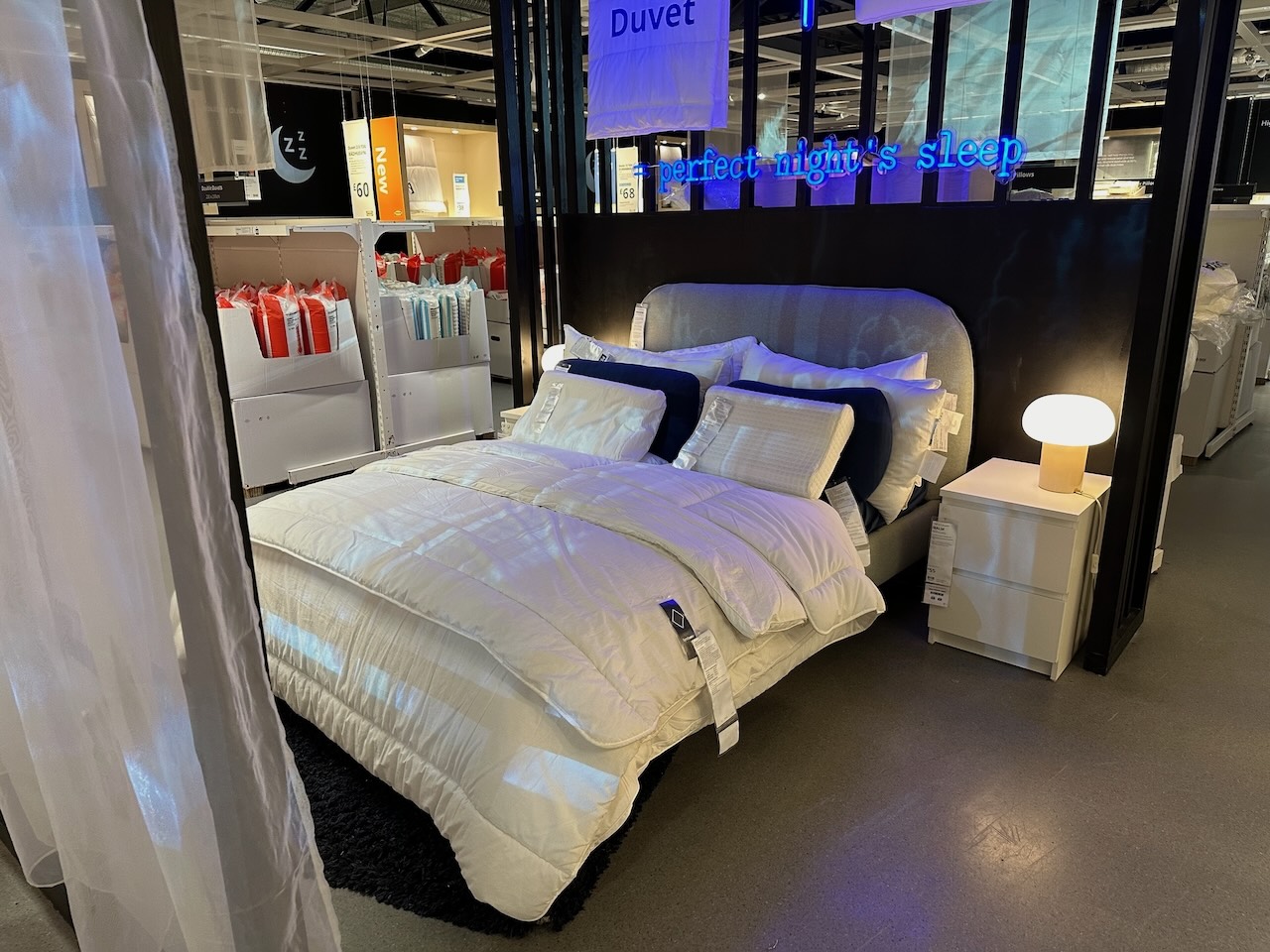
For an idea of what to look for in a true dual spring pocket mattress, take a look at our Artisan Tailored Pocket 2000 mattress for a detailed spec of a handmade mattress.
What’s IKEA’s S-Core Spring Technology?
In 2023 IKEA introduced a new term to the mattress world with its S-Core springs. We’ve been intrigued by this and sliced some open to take a look. We were a bit stunned when we saw the cutaway with simple steel pocket springs inside unless we were missing something. However, as these are coupled with micro springs (read our review of those here) we believe this term is used to define both the pocket spring and the micro spring combined. The S-Core doesn’t relate to a new spring shape or any new materials and seems more like a marketing spin sadly. We’d love IKEA to confirm one way or the other.
7. ÅBYGDA Mattress Review
The ÅBYGDA is IKEA’s memory foam one sided mattress model priced at £299 for a kingsize foam mattress. In a similar vein to the boxed mattresses of Emma, Casper, Eve and the original Tempur mattress etc. If you’re on a tight budget and need a supportive mattress that’s on the firmer side and are not a hot sleeper, this could be the model for you. 
The ÅBYGDA IKEA mattress contains:
- 100% Polyester zip off cover
- 30kg Reflex support foam
- 50kg (soft) memory foam
- One sided mattress
This mattress has a firm support layer before a light sink in the top layer, thanks to the softer memory foam. If you’re used to memory foam mattresses and their feel, you’ll either love this or hate it. Memory foam reacts to heat not just pressure, so softens as you warm up in bed. It then retains the heat, which is why this is not the mattress if you’re a hot sleeper. It will trap heat and make you sweat if you already struggle with regulating your sleeping temperature.
For the price point, it’s a good value mattress for your first bed or a spare room. Like all one-sided beds, it does limit how you can even out natural wear and tear. So bear that in mind. It may also benefit from a natural fibre topper to try and avoid some of the heat issues found within memory and synthetic foam beds.
Memory foam also has a habit of off-gassing and producing a plasticky smell for the first few weeks whilst the volatile organic compounds off gas and are released into the environment. All mattress fibres will offgass when new but memory foam and synthetic chemical-based foams tend to do this more. So if you are sensitive to these smells look at a different type of mattress with less off-gassing potential.
It also comes with a zip-off cover which can be washed. Caution must be taken though with zip off polyester covers as they tend to warp on hotter washes. So if washing make sure you do on a 30-degree or even cold wash. Line dry and never tumble. If it warps it will be almost impossible to get back on and the mattress will be ruined.
8. HIDRASUND Pocket Sprung Mattress Review
The HIDRASUND is IKEA’s top end pocket sprung mattress model with a mix of synthetic and natural fibres – and we like to start with the best first. It features the minimum number of pocket springs for a kingsize mattress with just over 600 and a secondary layer of Micro springs in the upholstery layer. The main layer of pocket springs uses a coir pad beneath it, which is then covered in wool wadding and cotton.
The Micro springs then sit on top of this and have a latex layer on top as the primary comfort layer. There’s no detail on the blend, depth, or type of latex used in this model, which is a shame. Without this information on the Latex, you can’t really compare or work out the firmness of the foam. We would guess it’s a 70kg layer given the feel.
This is a one-sided IKEA mattress and so it can’t be turned.
You can rotate it but you’re not going to get the longevity out of a one-sided mattress that you will with a two-sided mattress. It seems strange to have a coir insulator pad underneath the spring system, as this offers you the sleeper no benefit at all.
It would make far more sense on top of the main spring unit to help add support and create a breathable layer. Ideally, the model should have this on both sides of the spring to encase and insulate them. I know IKEA state this is there for breathability but, given the cover is a polyester mix (which is heat retentive compared to Natural fibres) where the breathability is most needed, it seems a bit misplaced.

The mattress has a very noticeable perimeter bar, almost painfully noticeable when you’re lying near the end of the bed. Perimeter support is usually provided by a thin steel frame and then a layer of firmer pocket springs. However, we believe in IKEA’s case they have opted for a far thicker bar and kept the spring tension the same all over. This is probably to ensure the 25-year guarantee holds up, but it felt overkill and rather uncomfortable.
When we first tried it, we thought it must be a cage sprung when feeling the edge but this is not the case.
The finish and ticking of the mattress are of basic quality, especially given its near £700 price tag. The side panels and handles are a cotton mix which is detailed as 53% linen, 47% viscose/rayon. It’s machine side stitched – meaning the pocket springs are not stitched to the side panel as they are in traditional pocket spring models. This leads us to the issue of bulging on the sides.
When sat on the edge of the mattress, the sides bulge out. This is because they are only machine stitched, not side stitched, which compromises the stability of the bed if you’re an edge sleeper. The top is a polyester blend quilt with imitation tufting.
For the price, this isn’t a bad model, however, given it’s one-sided, if you increased the price slightly (for a two-sided model) you could end up with something wonderful like the Artisan 1500 mattress with 1500 pocket springs (which come in 3 different spring tensions depending on your body weight) and a whopping 4300GSM or our Origins Pocket Latex at the same price point.
9. HOKKÅSEN Pocket Sprung Mattress Review
The HOKKASEN is IKEA’s mid-range mattress model, featuring a mix of synthetic spun-bond pocket springs and memory foam as the comfort layer. This is an entirely synthetic mattress in a firm feel, and the price reflects this. The top comfort layer is a 50kg memory foam, which is a medium feel and is responsive from our tests. Next, there’s a layer of polyester wadding, which we would imagine is around 300gsm at this price and feel.
There’s then a layer of 483 spun-bond mini springs in a foam casing. We’ve already discussed why mini springs should be avoided where possible.
IKEA claim these mini springs help against sagging, but our experience would suggest otherwise given their lack of stability.
Given how quickly they compress, they serve very little use and then all the compression is forced into the top comfort layers instead.
You would be better off with a double polyester layer or even another foam layer here if you wanted to avoid sagging.
However, we are arguing over semantics here! The next spring layer comprises of 555 spun-bond pocket springs (in a firm gauge, we’re guessing) which is just below the usual minimal 600 for a king size. We guess that the foam encasing that wraps around the springs acting as a box to aid perimeter support will take up the space of the 45 missing springs.

Again, it’s a one-sided model – meaning you can’t turn it. The detail on this mattress is minimal, with a basic machine-stitched side panel and handle. If your budget is around the £450-£600 price point, then there are better alternatives such as the Origins Reflex that has a firmer feel.
It’s two-sided and features over 1020GSM of fillings and 1,000 spun-bond pocket springs in a 1.4 gauge tension. If you’re looking for something similar, have a look at our Origins Reflex model which is two-sided, has a firm feel, and has 1020GSM of fillings.
10. MORGEDAL Memory Foam Mattress Review
The MORGEDAL IKEA mattress model is a one-sided memory foam mattress; its 18cm of depth make it one of the thinnest in its range and the thinnest mattress you should ever look at for any comfort properties. It’s made up of 33kg support foam, also known as reflex foam, and then 50kg memory foam. There are no exact details given on the IKEA website as to the thickness of the top memory foam layer.
This is an entry-level bed and it’s at a very competitive price point for IKEA. If you’re looking for years of comfort you’ll want to look elsewhere, however, as a temporary bed or in a guest room you might get away with this one for a couple of years’ temporary use. Memory foam‘s a love it or hate it material.
It retains heat, meaning you will be far warmer in a memory foam bed than a natural fibre model but the price reflects this.
If you haven’t experienced memory foam we always advise you try a friend’s if possible to see if the overheating and sinking feelings are tolerable for you.
We don’t offer any comparative models at this price point but would suggest the Origins Pocket 1500 as a far higher specification comparison to the IKEA mattress, which is two-sided and comes in two spring tensions.


11. HÖVÅG Sprung Mattress Review
The HOVAG IKEA mattress is an entry-level spun-bond pocket spring mattress with a firm foam comfort layer. It’s one of IKEA’s best value offerings for the components. Compared to other sub £300 mattresses, which are usually entirely foam, this features a spring unit. Its support unit comes from 570 spun-bond springs and a foam case that takes up the space of the other 30 springs.
The foam also acts as the perimeter support instead of the usual metal spring frame. It uses recycled fabric as the insulating layer on top of the springs. You can see this on their website cut away as a grey insulating layer made usually from recycled clothes and textiles. There’s then a 30kg reflex foam ‘comfort layer’, which is what gives it the ultra-firm feel.
Reflex foam is typically used as the support layer in memory foam mattresses, but here it is a comfort layer.
There is then a layer of polyester that, looking at the price, is probably no more than 200gsm before the IKEA polyester quilted cover.
Yes, you’ve guessed it: it’s a one-sided IKEA mattress, but you wouldn’t expect more for the price. Again, our Origins Reflex mattress with over 1000gsm of fillings is our nearest comparison model, even though it far exceeds the specifications and lifespan.
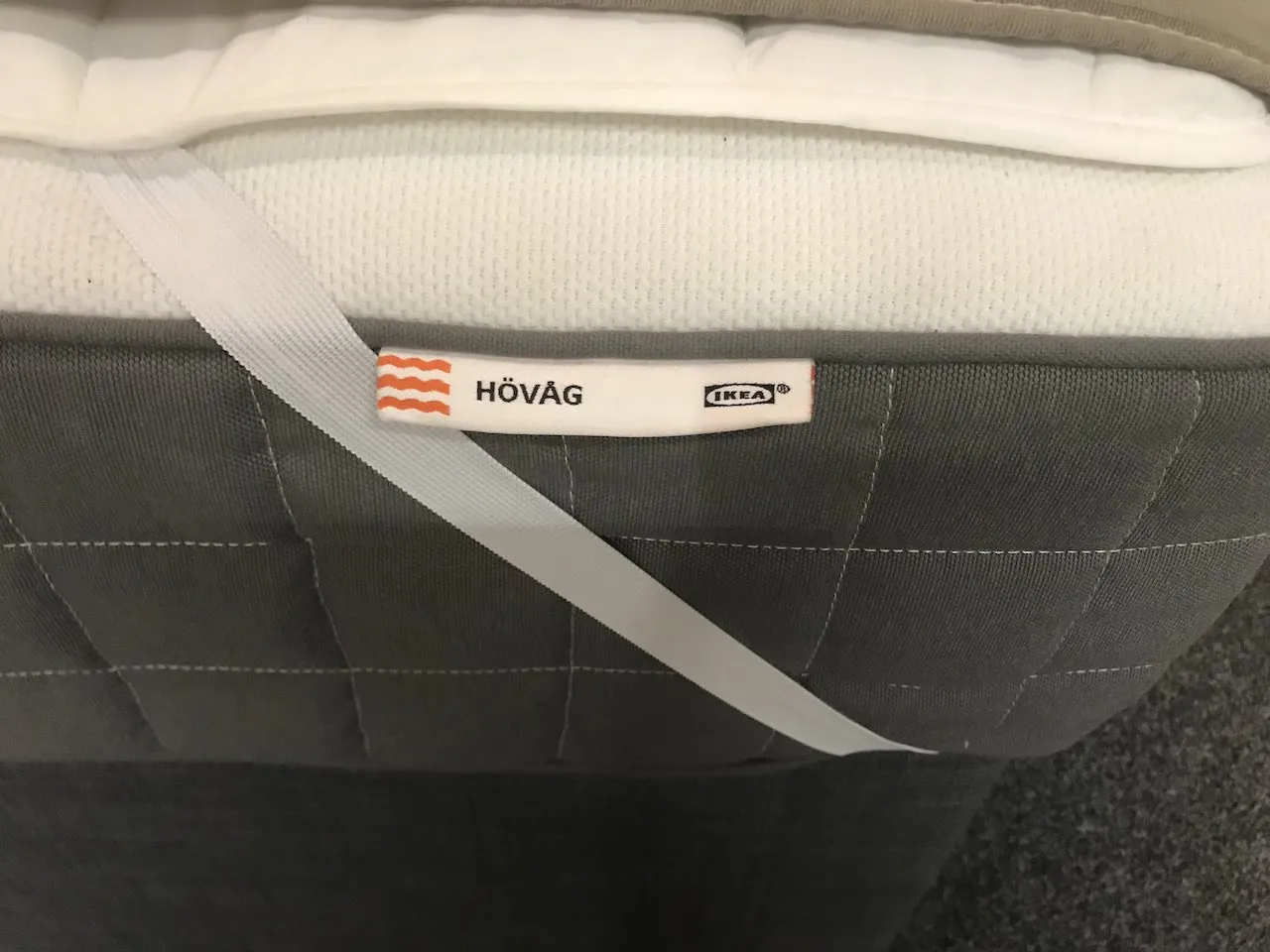
12. HAMARVIK Cage Sprung Mattress Review
The Hamarvik IKEA mattress is a very firm feel mattress great for sleepers on a really limited budget given its low price point. One-sided and cage sprung, you’re not going to get the benefits of Pocket springs in terms of transference if you sleep with someone else. Cage sprung mattresses have a habit of bouncing and shaking when one sleeper moves. And this is reflected in the price.
It’s good value at the price point but at the very lowest end of mattress manufacture quality.
The Hamarvik mattress from IKEA would actually make a great mattress base pad to go underneath another mattress to give the illusion of a sprung divan.
This model can also be crushed and rolled for delivery. It contains 23kg of materials in a kingsize, which to put into context is a third of most sprung mattresses which usually have 60kg+ of fibres and fillings.
13. HUSVIKA Cage Sprung Mattress Review
The HUSVIKA mattress from IKEA has a very similar construction and upholstery composition and it’s also sold for day beds. We have reviewed them together given they are practically the same mattress.
We don’t offer any comparisons to these two cage sprung models.
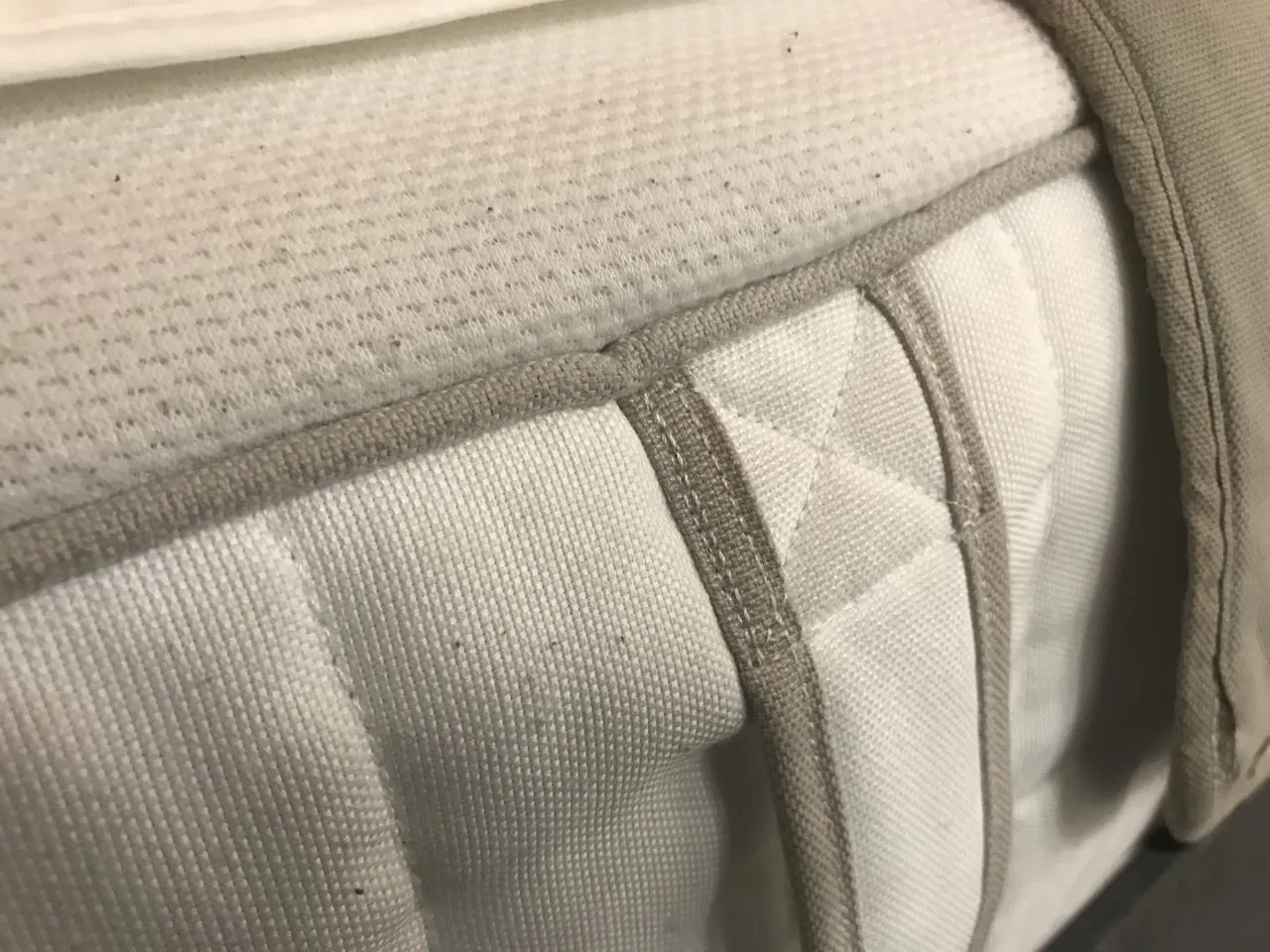
14. HYLLESTAD Pocket Sprung Foam Mattress Review
The HYLLESTAD IKEA mattress is another combination of pocket springs and foam comfort layers. It’s also one-sided, however, this model features ‘replica tuft’ on the top. Given that you can’t very easily tuft through foam, these looked stitched through to the top foam layer to help hold the cover in place. On traditional mattresses hand tufts are used which go all the way through the mattress and help hold fibres and upholstery in place to reduce settlement.
This IKEA mattress with foam and springs makes it impossible to truly tuft which is why they use this light stitch method instead.
This model features 570 synthetic pocket springs topped with 30kg Reflex foam and then 50kg memory foam for a really firm feel. Ikea doesn’t give the depths, unfortunately, just the densities of the foam.

We don’t have any comparisons for this model but found it true to its firm feel with a very solid comfort layer. Again, people not used to sleeping on foam should really try one first if possible to see if overheating is a problem.
15. MALFORS Foam Mattress Review
The MALFORS IKEA mattress is the first two-sided mattress from IKEA – but don’t get too excited! It’s a single layer of 30kg reflex foam for a very firm solid sleeping surface.
This IKEA mattress model contains no comfort layers or springs, relying solely on one layer of foam as the main mattress component.
There is a polyester wadding layer and we would guess this is 200GSM on top of the foam in the quilted layer.
The price once again reflects this from IKEA, and this model is probably aimed at the spare room or at a very budget-limited sleeper. Weighing in at 14kg for a Kingsize, it’s the same weight as a quality mattress topper and could actually be used as a very firm topper on another mattress if need be.
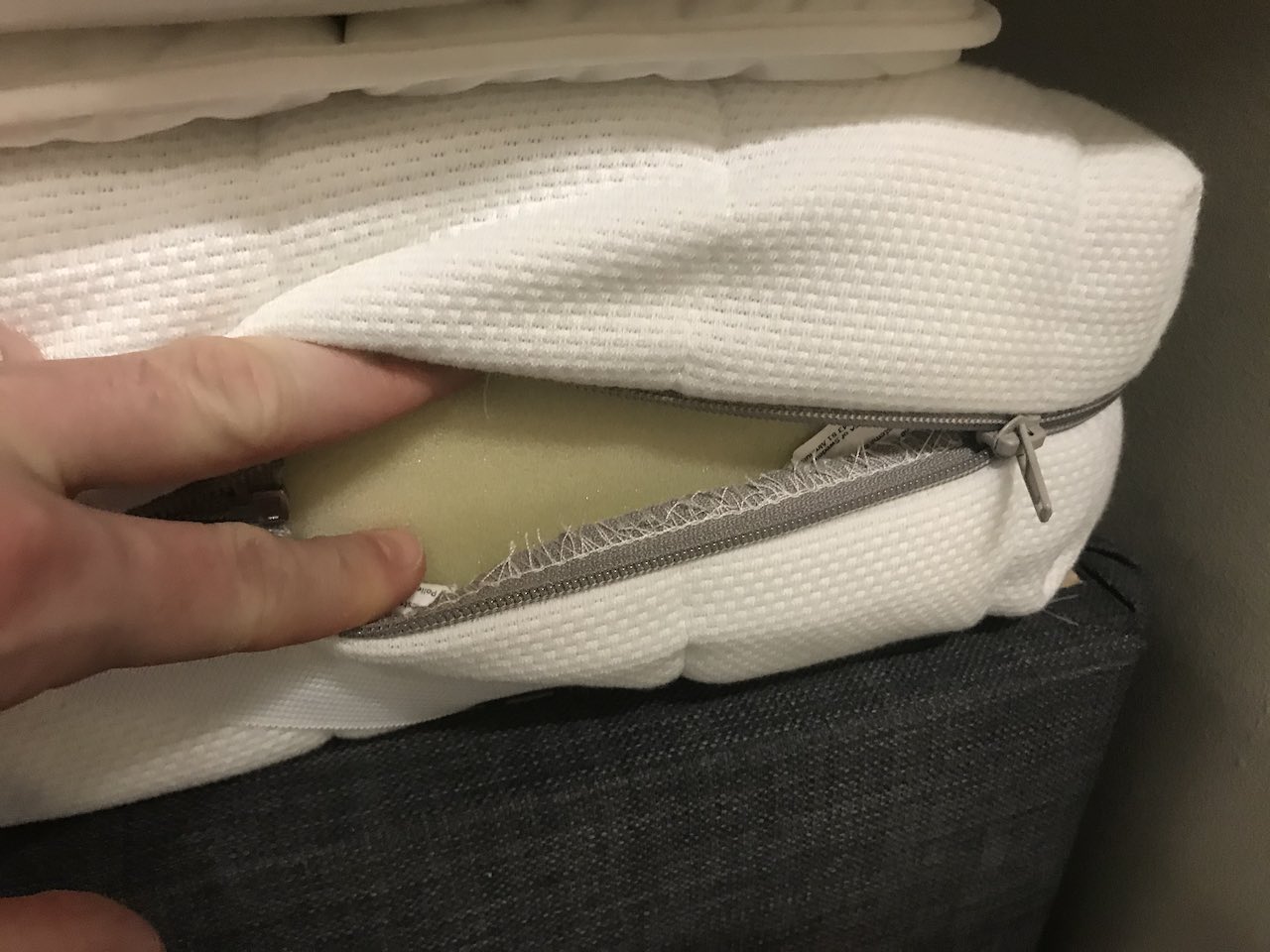
IKEA Mattresses Reviewed & Compared
Below we’ve provided a handy table showing each of the IKEA mattress models side by side so you can quickly compare the comfort and components for yourself, without hours of trekking around the shops.
| Model Name | Mattress type | Comfort rating | Support Details (Kingsize) | Upholstery/Comfort Specs |
|---|---|---|---|---|
| HIDRASUND | Natural & Synthetic Fibre | Medium/Firm | 653 Pocket Springs + 774 Micro Springs | Wool wadding, Latex & Cotton. |
| HOKKÅSEN | Synthetic Fibre & Foam | Firm | 555 Spunbond Pocket Springs & 483 mini-springs | 50kg Memory foam & Polyester wadding |
| HÖVÅG | Synthetic Fibre | Firm | 570 Spunbond Pocket Springs | Reflex foam 30kg & Polyester Wadding |
| HYLLESTAD | Synthetic Fibre | Firm | 570 Spunbond Pocket Springs | 50kg Memory foam, 30kg Reflex foam & Polyester wadding |
| HAMARVIK | Synthetic Cage Sprung | Firm | Bonell Spring Unit | 30kg Reflex foam & Polyester wadding |
| HUSVIKA | Synthetic Cage Sprung | Ultra Firm | Bonell Spring Unit | 33kg Reflex foam & Polyester wadding |
| MORGEDAL | Memory Foam / Synthetic | Medium/Firm | Polyurethane foam 33 kg (Support) | Polyurethane memory foam 50 kg (Comfort layer) |
| MALFORS | Solid Foam | Firm | 30kg Reflex foam | Polyester quilted cover |
16. IKEA Mattresses Bulging Sides
So why did the IKEA pocket sprung models we tried bulge when you sit or lie near the edge? The reason for this is that the side panels are not stitched through to the pocket spring unit like they are on other mattresses. There’s also little wadding or padding to aid rigidity for the IKEA mattress side panels. One reason for this may be as a compromise to enable the mattresses to be crushed and rolled for delivery. We’ve written extensively about boxed mattresses such as Simba, Eve, and Casper.
We’ve also tested how quickly mattresses get damaged once they are rolled for any period of time over 2 months. Foam can tear over time and springs can become deformed. This is why we would never design a mattress that can be rolled.
The convenience of that delivery means you’re left with a far poorer mattress choice, as only very basic mattresses can be crushed and rolled.
You end up compromising the mattress upholstery and structure for a quicker delivery. It’s not just these models that we have tried that have had bulging issues: the Premier Inn mattress we tested also suffered from this too!
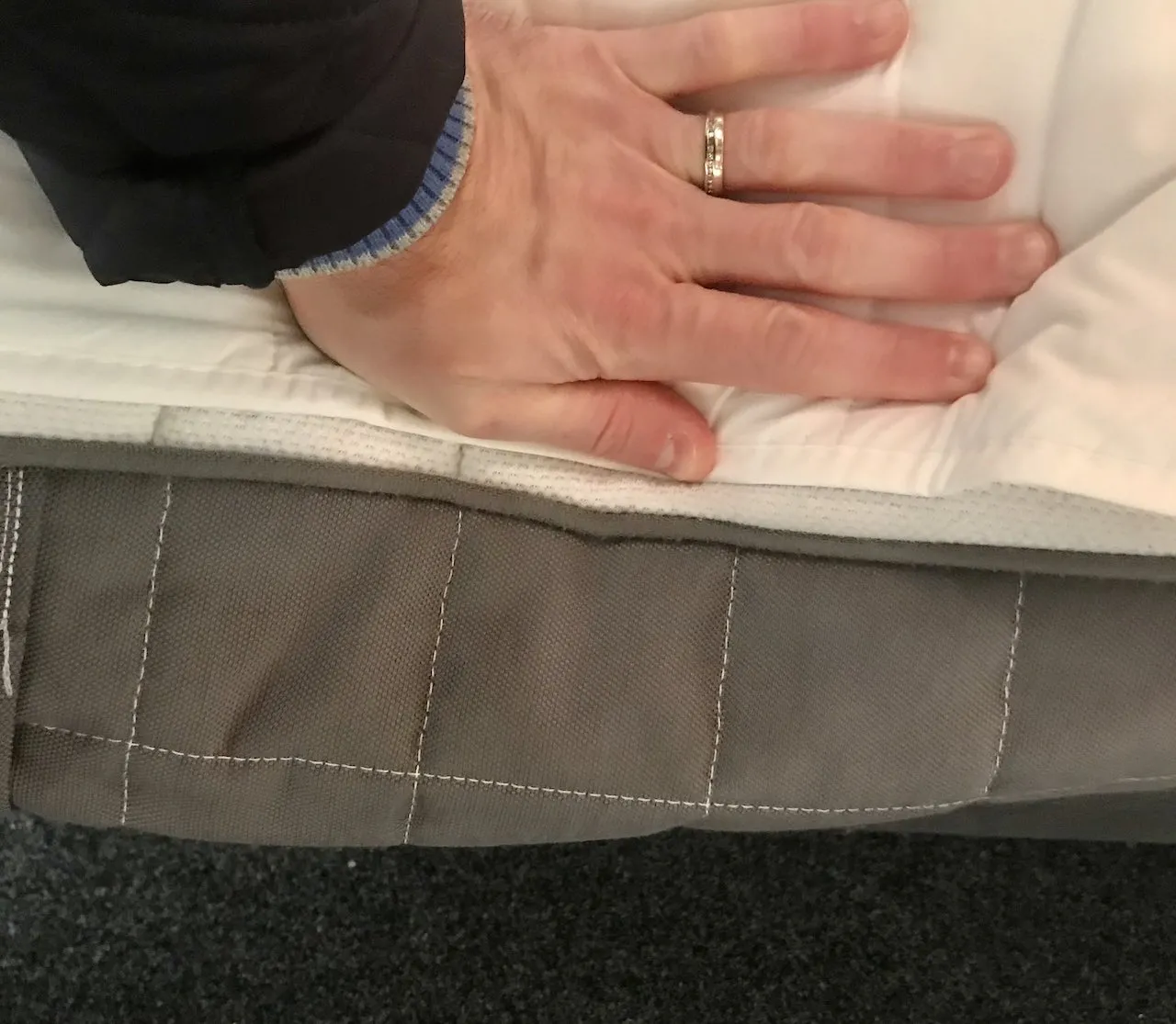
16. What type of springs do IKEA mattresses use?
IKEA uses three types of mattress springs in their bed models.
1. Spunbond Pocket Springs in IKEA
The first is Spunbond pocket springs (you can read more on them here). Unfortunately, they don’t specify the spring wire gauge so we’re not 100% sure which tension the springs actually are. From testing out the range, we guess they are a firmer gauge at somewhere between a 1.4-1.6 gauge spring. Without it being confirmed we can’t be sure.
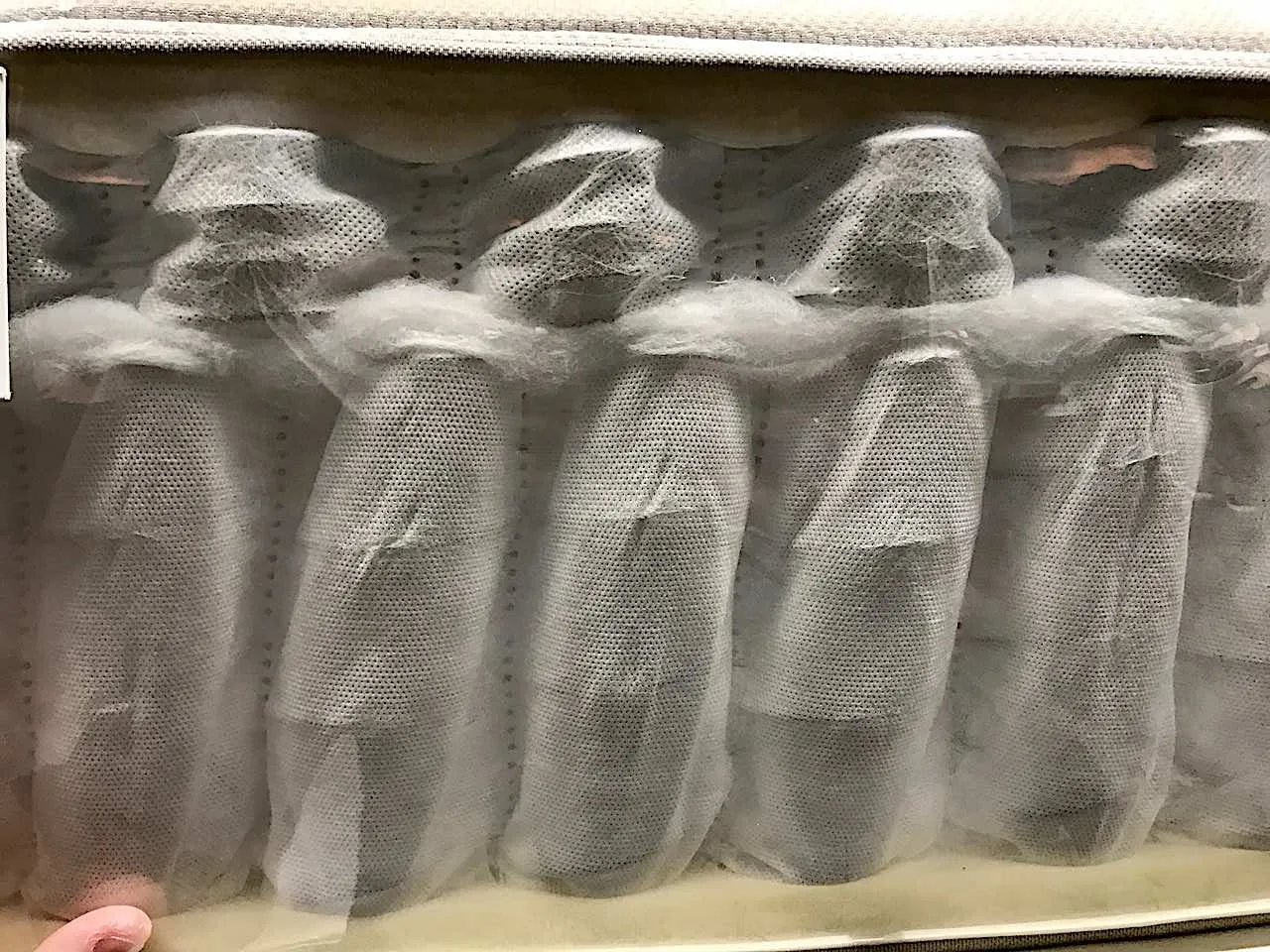
2. Micro or HD Springs from IKEA
The second spring that IKEA uses is the micro spring, which has recently started to appear in mattress showrooms and retailers. We’re not a fan of micro springs, as there’s been a move to start using them to hyperinflate the spring counts in mattresses. This is not the case for IKEA, who typically use them as a secondary comfort layer and to increase loft in their one-sided mattresses.
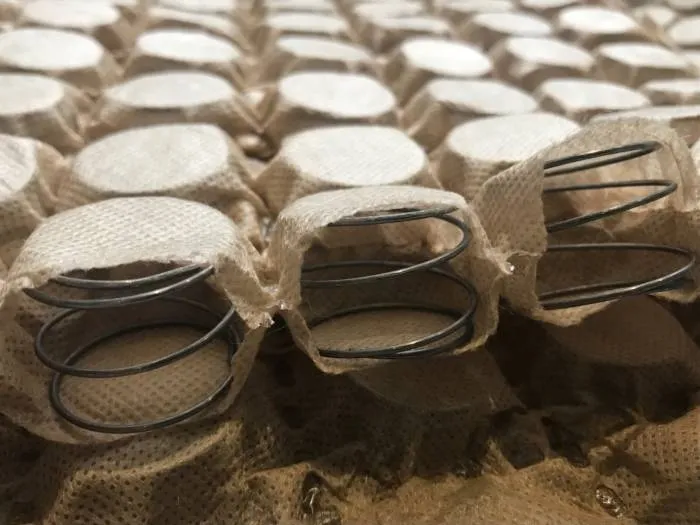
Caution, however, should be taken when you see other mattress models claiming 4,000, 6,000 or even 8,000 springs. The maximum single layer count of Pocket Springs you can fit in a mattress is 2,000. After that, it’s either a dual-layer of pocket springs, like our Artisan Bespoke 002, or Micro/HD springs.
The minimum number of regular Pocket Springs you can fit in a mattress is 600 springs.
This is why some of IKEA’s models have around 550-570, as they use a foam tray to house them in rather than a perimeter wire.
3. Bonell Coil / Cage Sprung IKEA beds
The third spring they use is the dreaded cage or Bonell spring which is one massive spring unit. It’s the cheapest spring construction method and the HAMARVIK & HUSVIKA represents that. If possible, you should avoid Bonell spring units as they are dreadfully uncomfortable and have a habit of waking up sleepers when you want to move during the night as they wobble & shake.
They also offer no protection against roll together during the night as the central part of the open coil spring unit is the one point of weakness.

17. How are IKEA Mattresses Rolled & Delivered?
IKEA, like other ‘mattress in a box’ companies, are offering to roll their mattresses for delivery. You will often find this with one-sided and entry-level mattresses for two reasons. The first reason is that the entry-level models only contain a fraction of the upholstery layers of mid to high-end models, meaning their contents can be crushed and squashed together far easier.
The second reason is that the cost of transport is far less with a mattress in a box. It’s far easier to roll a mattress and get 40 on a truck than have 6 full-size mattresses on a truck.
Whilst it’s a clever way to save space, it’s probably not the best method of handling any mattress.
18. Does rolling IKEA mattresses damage them?
Rolling the mattress is done under considerable pressure to compress all the materials and they are then strapped up while they await delivery.
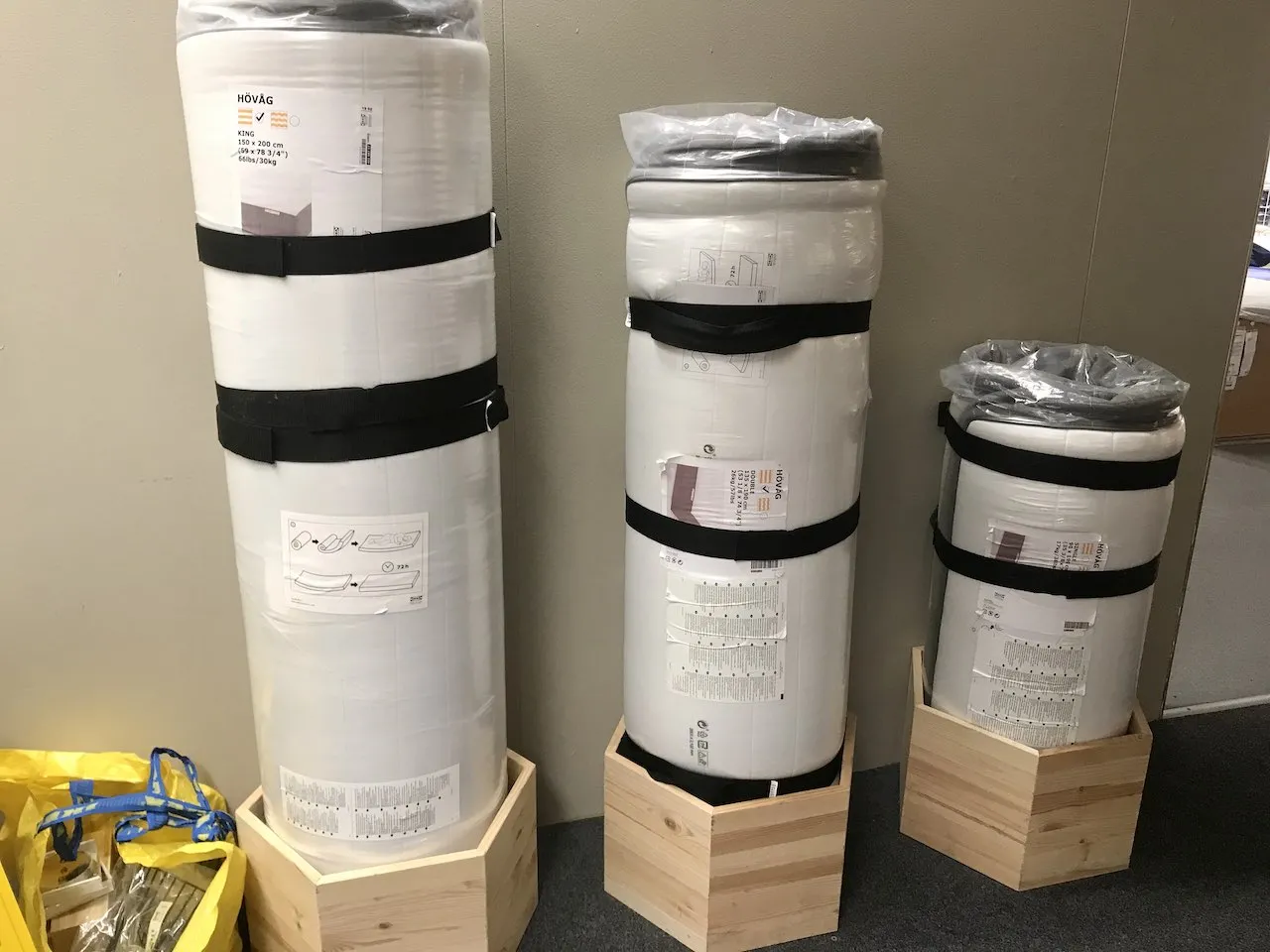
You will find with any rolled mattress that it takes days before it reaches its final settlement. It takes a while for all the air and spaces between the fibres and springs to reform. So you’re not going to get a true feel of the mattress for the first 3-5days, in our experience. It does solve the problem of restricted access in smaller properties and flats, however, if you choose a Zip & Link model in our range, these come in two parts.
This means that they can pretty much fit in any room no matter how restricted the access is. The reason we don’t roll our mattresses is also twofold. Firstly, we don’t like the potential damage that rolling does to the components within the mattress. Secondly, our mattresses can’t be rolled as they contain far too many upholstery fillings to be crushed.
A nice problem to have!
19. What’s the best IKEA mattress?
Based on our testing and delving under the covers the best all-rounder which features some natural fibres and spunbond pocket springs is the IKEA HIDRASUND mattress. However, it’s a one-sided mattress and features the pretty pointless micro springs and the issue of the obvious perimeter bar being felt. You will probably want to couple this mattress with a deep topper to overcome the issues associated with one-sided mattresses that can’t be turned. Ie settlement and potential dips.
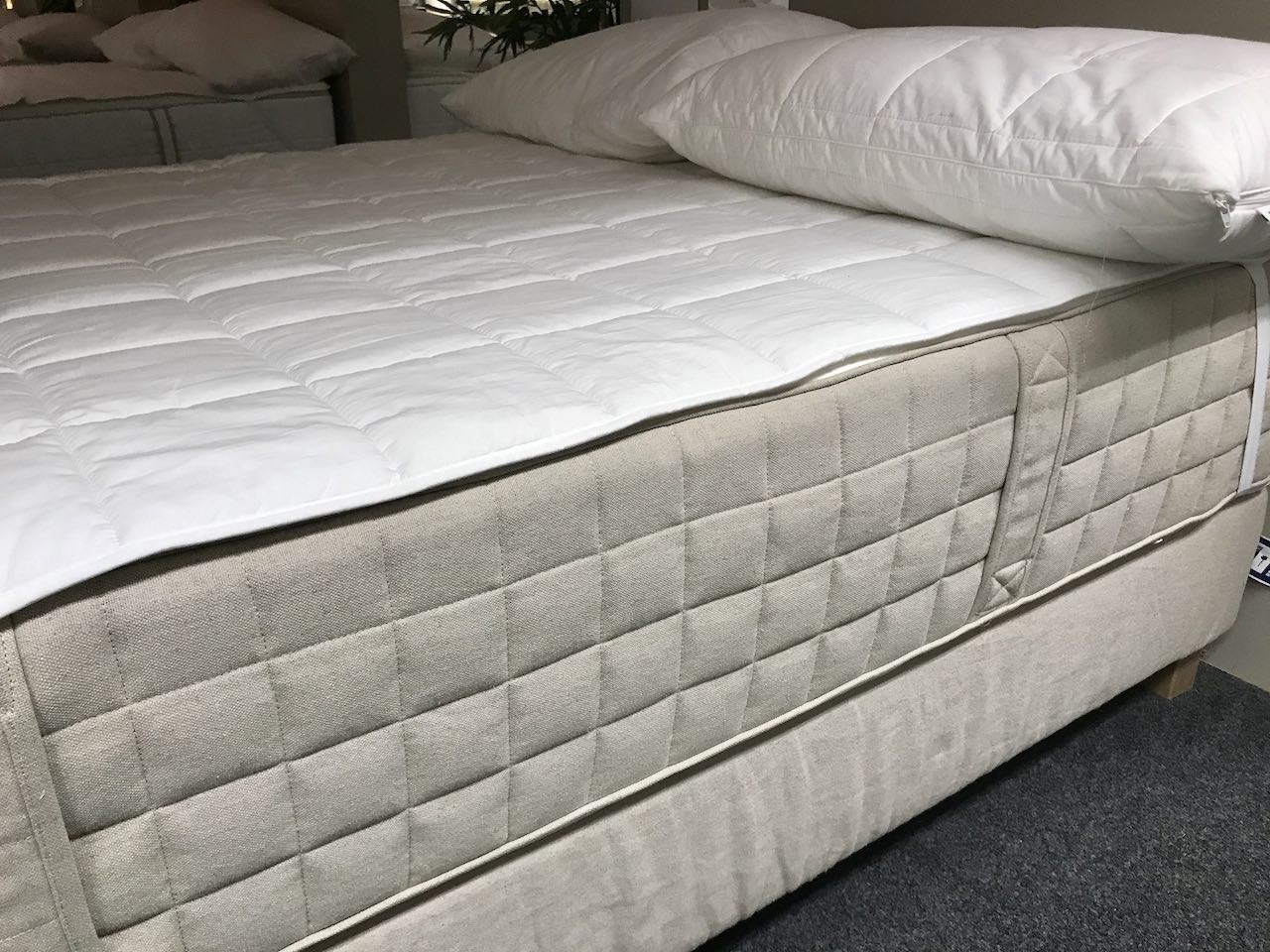
20. Who Makes IKEA’s Mattresses?
IKEA doesn’t divulge who makes their mattresses but we suspect they use a variety of manufacturers outside the UK that make batches of their models that are then are shipped into the UK. This is similar to imported white label beds, where the same specifications are mass-produced and then labelled for different suppliers around the world. We will continue to see if we can find out the exact source – let us know if you have any more detail on their manufacturers.
Need more help choosing a new mattress? Why not check out our ultimate mattress buying guide vlog. It will help you save both time and money when looking for a new mattress!
21. IKEA mattress guarantees and returns explained
What happens if your IKEA mattress isn’t comfortable, suitable or worse still develops a fault? Well there’s a whole host of remedies for unsuitable purchases or if your IKEA mattress becomes faulty. We summarise the options open to you below and if you want to delve deeper into how to return or claim for a faulty IKEA bed definitely read this post!
- IKEA mattresses can be exchanged within 90 days
- They must be clean and free from damage
- The customer has to return the mattress to their store
- You must present your original receipt
- You may need to hire a van depending on the size of your mattress
- Mattresses must not be folded or the exchange is void
- If claiming under a guarantee fault speak to the store first on 0203 645 0000.
- IKEA will inspect potential faulty mattresses themselves
- They don’t use an independent third-party inspector
- If deemed faulty you will either get a replacement or an alternative
Summary
IKEA’s mattress range is of sound quality for the price point. If you’re on a budget, their HÖVÅG & HIDRASUND IKEA models offer good value and a mix of some natural fibres and layers. What must be taken into consideration, however, is that these are all one-sided mattresses, with the exception of the MALFORS. So, when trying to compare the models on the price, you need to bear that in mind.
You only have one side to sleep on compared to other two-sided models like the ones we compare to. What’s great is that IKEA shows you what’s inside their mattresses, with cutaways and technical specifications. Which is a far cry from most mattress retailers who like to hide the contents making it near impossible for you to compare! However, they could go one step further and detail the grams per square meter of their fibres to give full transparency. If you’re on a budget, though, the IKEA range is good value for money and offers convenience.

Dreaming of the perfect nights sleep?

Ask us a question
There are over 6000 questions and answers submitted by you on all questions about mattresses and bed problems. Enter a keyword such as Vi Spring, John Lewis beds, bad back or Memory Foam and see if your question has already been answered.
If you can’t find an answer in knowledge hub, ask a new question. We aim to respond to all questions within one working day.
Newsletter
Enter your email to join our newsletter. We’ll send you occasional news and mattress expertise.

